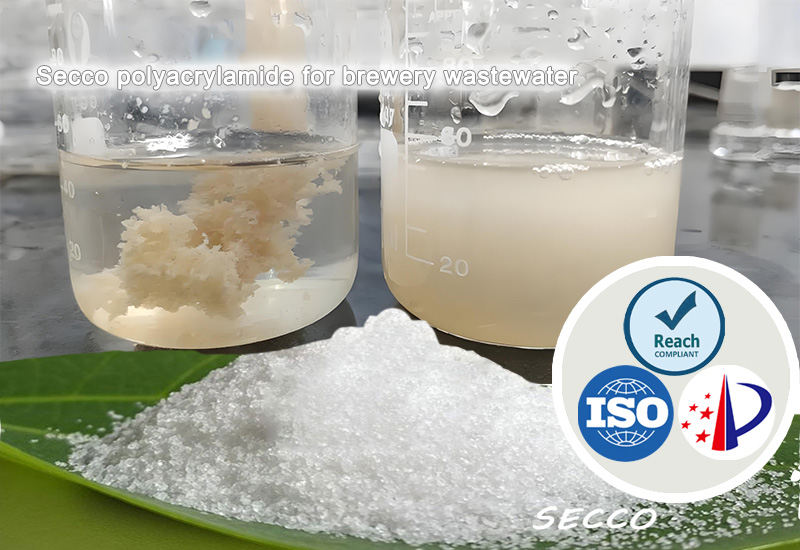Inbrewery wastewater treatment, the selection and application ofpolyacrylamide(PAM) significantly impact treatment efficiency and operational costs. Below is a detailed analysis of PAM selection and performance based on brewery wastewater characteristics.

1. Characteristics of Brewery Trash
Contentus organic altus: Rich in saccharis, proteins, et starches (high COD/BOD).
Suspendentes solidos (SS): residuos fermentorum, fibros frumentorum et particulas colloidales.
Variabile 水质 (pH 4–6): Fluctuations due to brewing, fermentation and cleansing processes.
High biodegradability: Suitable for biological treatment but requires pretreatment to reduce organic load.
2. Factores claves in selectione PAM
(1) Selection Ionic Type
Cationic PAM (CPAM)
Application: Sludge dewatering (e.g., after activated sludge process).
Functio: Neutralizes negativo charged colloids, improves pulchritudinem, and reduces moisture content (to ≤80%).
Recommendatus est: densitate medium-high charge (60–80%), pessima molecula (MW) 8–12 million.
PAM Anionic (APAM)
Application: sedimentatio primaria (pretreatment for SS removal).
Functio: Bridges particulas suspendentes via adsorption, formant flores magnos.
Recommendatus est: MW medium-high (10–15 million), 10–30% hydrolysis.
Non-ionic PAM (NPAM)
Aplicatio: Conditiones Neutralis aut fluctuationis pH, aut quando ions metallis sunt.
Functio: Relationes super ligamentum hydrogenum; - saepe cum coagulantibus (ex. PAC).
(2) Molecular Weight (MW) Selection
High SS wastewater: High MW (≥15 million) for better bridging.
Soluble organics: Lower MW PAM may assist coagulation.
(3) Dosage & Mixing
Dissolutio: 0.1–0.3% solutio cum gentilis stirritione (evade degradationem tunicam).
Dosage: 1–10 ppm (determined via jar testing).
3. Treatment Performance Comparison
Parametrus - APAM (Pretreatment) CPAM (Sludge Dewatering)
Removing COD 30–50% (cum PAC) gradient-editor-action
SS Removal 70–90% –
Sludge Cake Moisture – 75–80%
Velocitate Significantly improved Increased compressibility
4. Key Considerations
Jar Testing: Essential due to wastewater variability.
pH Adjustment: Optimal PAM performance at pH 6–8 (lime may be needed for acidic wastewater).
Safety: Ensure acrylamide monomer content ≤0.05% (regulatory compliance).
Costa-Benefit: CPAM carior est, sed efficabilitatem dewateris melior est.
5. Processus Treationis Typicalis
Flow: Screening → Equalisatio (pH adjustment) → PAC + APAM coagulation → UASB/Aerobic Process → CPAM sludge dewatering.
Selecting the appropriate PAM type, breweries can enhance wastewater treatability, improve sludge handling and reduce disposition costs.
Si volueritis ad produktos nostros aut habere quaestiones, implete formam inferiorem, quaeso. We will contact you immediately after receiving it. Thank you for your choice.